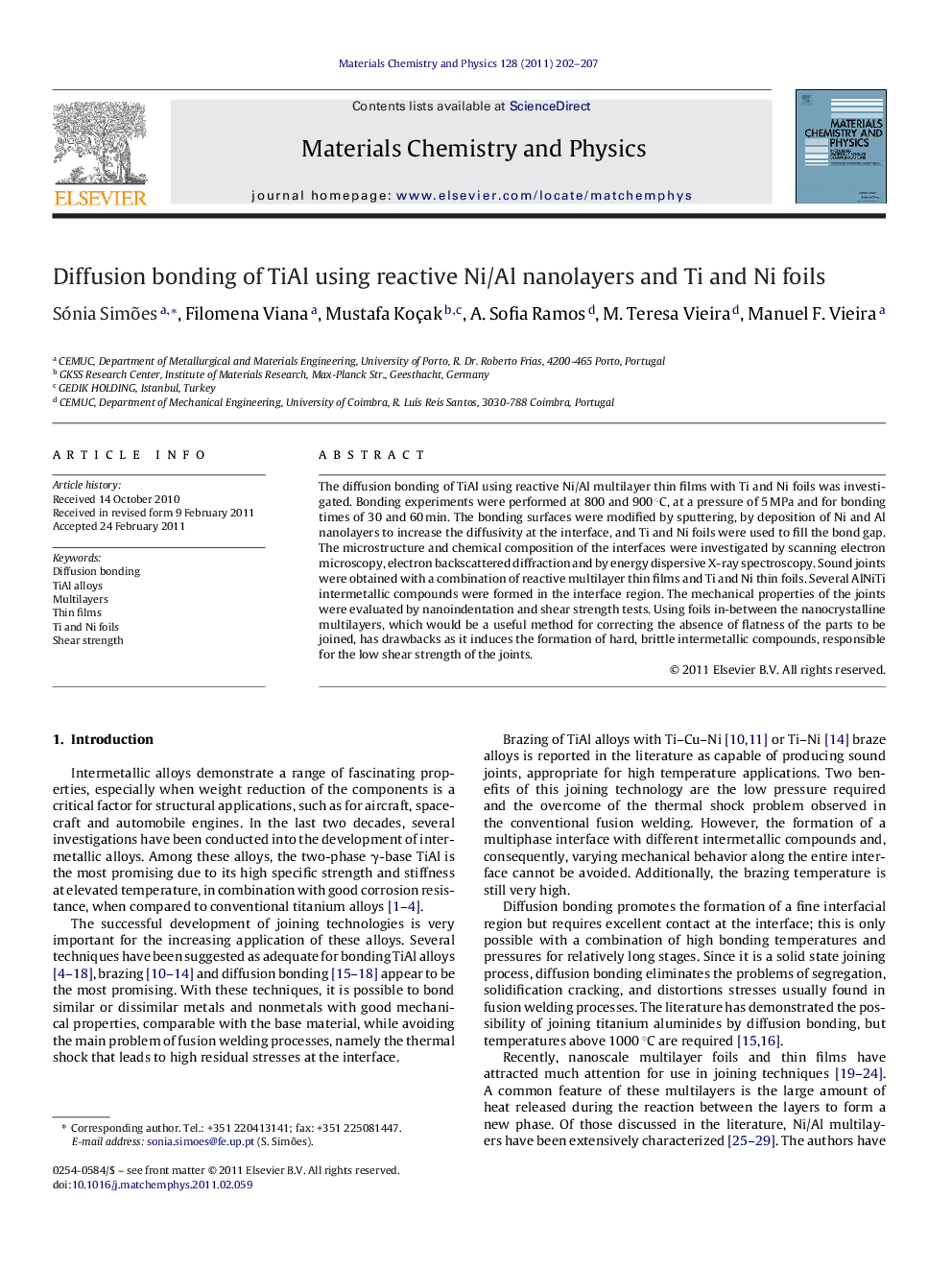| Article ID | Journal | Published Year | Pages | File Type |
|---|---|---|---|---|
| 1524851 | Materials Chemistry and Physics | 2011 | 6 Pages |
The diffusion bonding of TiAl using reactive Ni/Al multilayer thin films with Ti and Ni foils was investigated. Bonding experiments were performed at 800 and 900 °C, at a pressure of 5 MPa and for bonding times of 30 and 60 min. The bonding surfaces were modified by sputtering, by deposition of Ni and Al nanolayers to increase the diffusivity at the interface, and Ti and Ni foils were used to fill the bond gap. The microstructure and chemical composition of the interfaces were investigated by scanning electron microscopy, electron backscattered diffraction and by energy dispersive X-ray spectroscopy. Sound joints were obtained with a combination of reactive multilayer thin films and Ti and Ni thin foils. Several AlNiTi intermetallic compounds were formed in the interface region. The mechanical properties of the joints were evaluated by nanoindentation and shear strength tests. Using foils in-between the nanocrystalline multilayers, which would be a useful method for correcting the absence of flatness of the parts to be joined, has drawbacks as it induces the formation of hard, brittle intermetallic compounds, responsible for the low shear strength of the joints.
► A modified bonding technique was used to join TiAl alloy at low temperature and pressure. ► Sound joints were obtained at 800 and 900 °C for bonding TiAl alloys. ► Several AlNiTi intermetallic compounds were formed in the interface region. ► Increasing temperature leads to the formation of new intermetallic phases. ► The hardness profiles along the entire interface show a high variation in hardness values.
